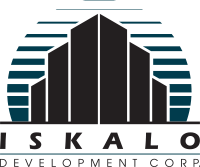It isn’t a surprise that the COVID-19 pandemic impacted urbanization and development in many ways over the last year or so. Urbanization can be seen as progress in industrialization, socialization, and modernization for a certain population. While some of the urbanization changes caused noticeable concerns, some changes introduced as many pros as cons. These unique changes led to both positive and negative consequences of urbanization and below are some of the ways they have done both of those things.
The Sustainability Struggle
With urbanization and industrialization come sustainability struggles. That has been clear since the Industrial Revolution. The more buildings developed in a close-knit community, the more likely pollutants and smog are to be released. Though COVID-19 did slow urban development down over the last year, the pandemic brought more people into cities and more urban areas where this kind of pollution is more prevalent. With life slowly making way toward some sort of normalcy again, more mixed-use buildings are being built to support the many people rushing to the cities to both live and work remotely.
The Changing “American Dream”
Though the “American Dream” has changed slightly over the years, the cliche of career, marriage, suburbs, and children is no longer the norm. Many millennials are delaying marriage to move to more urbanized spaces where they choose paying for a lease over paying a mortgage. Research shows that about 62% of millennials currently choose to live in a mixed-use, urban community where they live, eat, and work in the same area. Knowing that more people are searching for residential space gives developers more room to try out new design plans that could benefit the modern-day adult.
The Role COVID-19 Played
In truth, the above points have been impacted by the COVID-19 pandemic over the last year or so. However, more changes have occurred from the pandemic impacting urbanization and development on top of sustainability concerns and the outlook of the millennial future. The pandemic forced many families and young professionals to seek out affordable real estate for both housing and businesses in smaller, less populated cities.
This has made way for unique technological advancements with more minds coming together from all walks of life. In a way, the unfortunate pandemic has caused some business connections to thrive in unexpected ways. No matter the consequences, the COVID-19 pandemic has definitely touched upon urbanization problems as well as urbanization growth.

